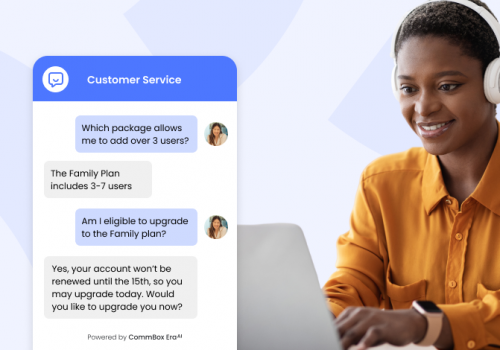Customer Journey Map. Do you know what your customer’s journey looks like? If not, you need to create a customer journey map. A customer journey map visually represents how customers interact with your brand.
It shows the different stages of the customer’s experience, from when they first hear about your product or service to when they become a returning customer.
Creating a customer journey map can identify any pain points or areas where customers are struggling.
You can then create solutions to fix these problems and improve the overall customer experience. So, don’t wait any longer – start creating your customer journey map today!
Here are some stats to prove the importance of a customer journey map:
- A study found that organizations that focus on the customer experience outperform their competitors by 17%.
- Another study found that companies that focus on the customer experience see a 10% higher revenue growth than those that don’t.
So, there you have it – if you want your business to succeed, you need to create a customer journey map!
This article gives an insight into customer journeys, a customer journey map and its benefits, and how it can help your organization focus on the one thing that truly matters.

What is a Customer Journey Map?
A customer journey map traces the process of customer experience. From your initial customer contact till product delivery and eventually to a long-term relationship.
The journey map identifies the point of customer interaction with your organization. It can either focus on one part of the customer’s journey or the entire journey.
It measures the customer’s feelings and motivation during each phase while communicating with your organization.
Customer journey maps aim to understand more about your consumer’s needs and preferences.
What are the Benefits of Customer Journey Mapping?
Customers are crucial to your business and the reason for your business continuation. Hence, throughout the entire exercise, it will all come back to the customer.
For long-term relationships with your customers, practicing improvement in their journey and keeping them happy and engaged is the best way.

Allows Collaboration within Your Organization
Creating your customer journey is setting your goal, which means the whole organization is focused on one thing. It’s nice to work together and coordinate with other teams, you may make some friends too.
Accountability
Throughout the journey, you‘ll be able to recognize the problems and get them resolved by the respective department. In this way, you’ll discover the most suitable team member to handle the issues. This helps them become accountable for the tasks assigned.
Helps to Create a Personal Connection
While dealing with customers, you don’t only sell products; you also sell emotions. Your customers are human and not data or bots. Personalized automated emails will give you an edge over your competitors and help you humanize the conversation.
Uncovers Hidden Truths
While studying the customer journey, you may encounter some pointers that you need to add or modify accordingly. These uncovered touchpoints can prove helpful while mapping your customer journey. (“I never knew we needed a click-to-call button!”)

Allows Prioritization
Once you discover the problems in the customer journey, you’ll know where to focus and accordingly, you’ll execute the next steps.
Journey mapping focuses on customer experience during the entire customer lifecycle.
The journey map can be seen as the roots of the tree. It keeps the organization growing and solid.
What does a customer journey map usually include?
A customer journey map can be studied in three crucial prerequisites- the actor, the scenario, and the journey lifecycle.
The Actor
The one experiencing the journey. It’s the person-either representing the customer base or someone else you’re interested in researching.
(Also, there’s the cast – the people who influence the actor’s journey. for e.g. If a B2B purchaser is an actor, then the cast could be the stakeholder, colleagues, or clients)

© Dreamstime.com
The Scenario
The journey that’s being particularly mapped. For instance, imagine you’re a business person looking for a new card where not the price but unlimited minutes, low overseas call rates, and good customer support are a priority.
These details form your particular scenario. These scenarios focus on particular problems pertaining to the journey and hence it gives personalized solutions.
The Journey Lifecycle
The activity where the actor goes through the journey. At every activity, you’ll be monitoring their actions, thoughts, and emotions.
All these activities will define the points of potential interaction and the overall journey. These facets of the journey map will help you gather insights on improving the customer experience.
How do we identify scenarios?
Apart from various ways, the three best possible ways to identify the scenarios of the customer journey map are:
User research:
Executing customer interviews can prove to be the best research.
Analytics:
Your website analytics will give you an accurate picture of which particular area needs further investigation. For instance, when a product page is losing traffic, you can do an analytics study to solve the problem.
Internal prerogatives:
An internal company project or analysis reveals any problem that needs attention.
What are Journey Phases?
The journey phases are what your customers surface when they interact with your offerings.
The journey may vary from customer to customer, which depends upon their experience with your product or service.
Now, it depends upon you to focus on one common problem or transform that particular issue to bring it up to speed with the rest of your journeys.
The phases within this journey will help you get a view of the entire customer lifecycle.
Things to Remember About Journey Phases
- In order to have genuine and clear insight, you need to define the phase from your customers’ point of view and not your own. \
- Remember to base each phase on actual observations of consumer behavior and not cold hard data.
- Create a general model that will accommodate all scenarios.
- Each stage needs to be defined thoroughly.
- Discuss within an organization and get internal buy-in from executives.

What does a Typical Customer Journey Map Look Like?
So, here’s the most awaited part- an example of a customer journey map. Remember, your customer journey map may differ from the one mentioned below. However, different organizations have different ways of presenting their customer journey map.
Some maps are much fancier, some are right to the point, and others are just a bunch of colored post-it notes stuck to aboard.
Moreover, like design templates, invoice templates, and email templates many customer journey map templates are also available to speed up the business’s daily operations and make things more straightforward and easier to interpret.
The three essential parts of the customer journey map that we’ve split into zones, and you must include are:
Zone A is the lens – The journey here is seen through the actor and scenario’s eyes.
Zone B is the experience – This comprises journey phases, I.e., the behavior that provides a high-level organization of actions and the actor’s actions, thoughts, and emotions throughout the journey.
Heading to Zone C, here you gather the opportunities for improvement and insights. At the same time, assign the internal ownership.
This brings us to the ultimate point of the customer journey app, I.e., spotting the stuff that needs to be fixed.

How do You Spot Opportunities?
Every organization offers various journeys through its properties. However, there are plenty of ways to analyze the journey, which means no two journeys will highlight the same opportunities.
To start with, there are a few things to look out for.
- Look for points of failure: Here, you need to answer questions like – How can you better support users? What was missed? When are their needs least satisfied?
- Gaps: Find the loopholes in support offerings. Know what pain points you didn’t address?
- Redundancies: Check if there is any repetition in the process. Check duplication in your interactions? Are there multiple people doing the same job? Answer these questions, and you’ll spot the opportunities.
Contributed by Anisha Bhandari, a passionate content writer and SEO strategist at 1Center, who creates and curates’ content on marketing, sales & CX.
Deliver an Exceptional Customer Journey with CommBox
CommBox allows you to deliver a unified and efficient customer experience throughout the customer journey. By using the CommBox platform, you can communicate with customers through all digital channels from one smart inbox, and personalize any interaction, all while equipped with advanced tools like chatbots and automation rules.
Enable your support teams to serve your customers better, no matter what channel they use!
Schedule your free CommBox demo today!















